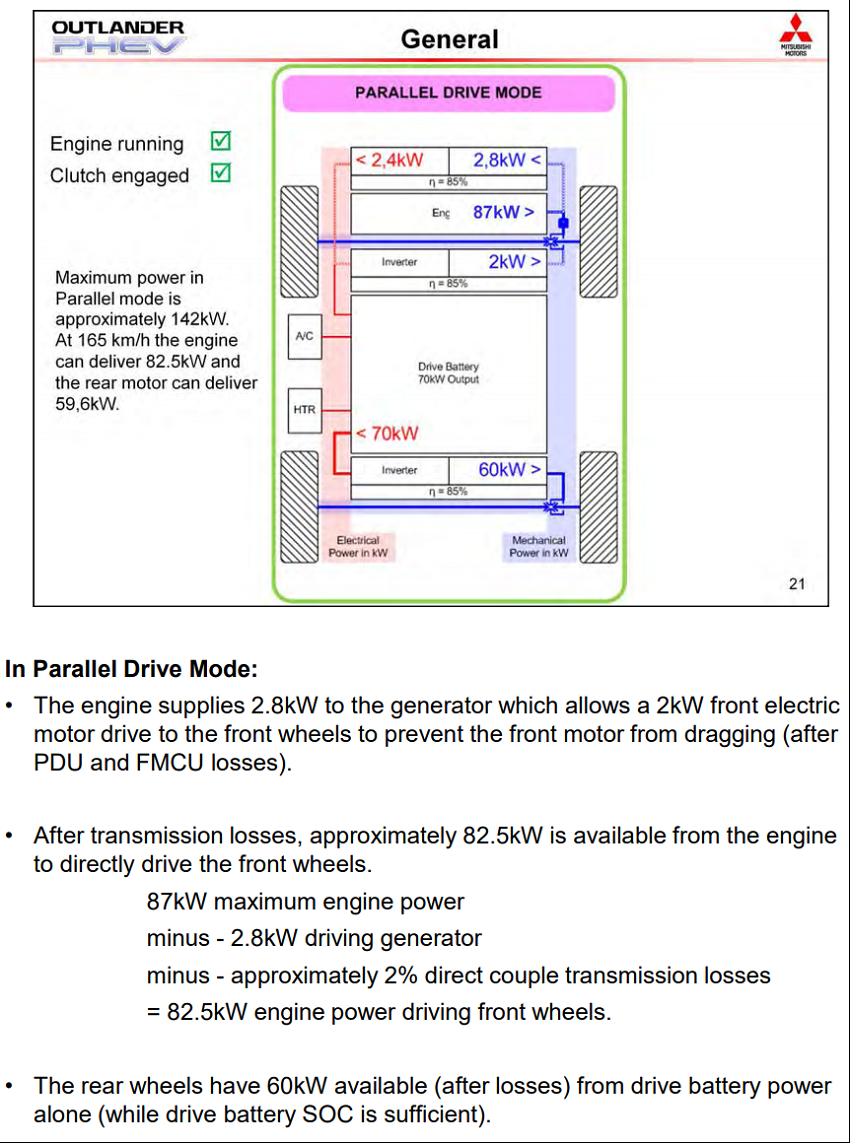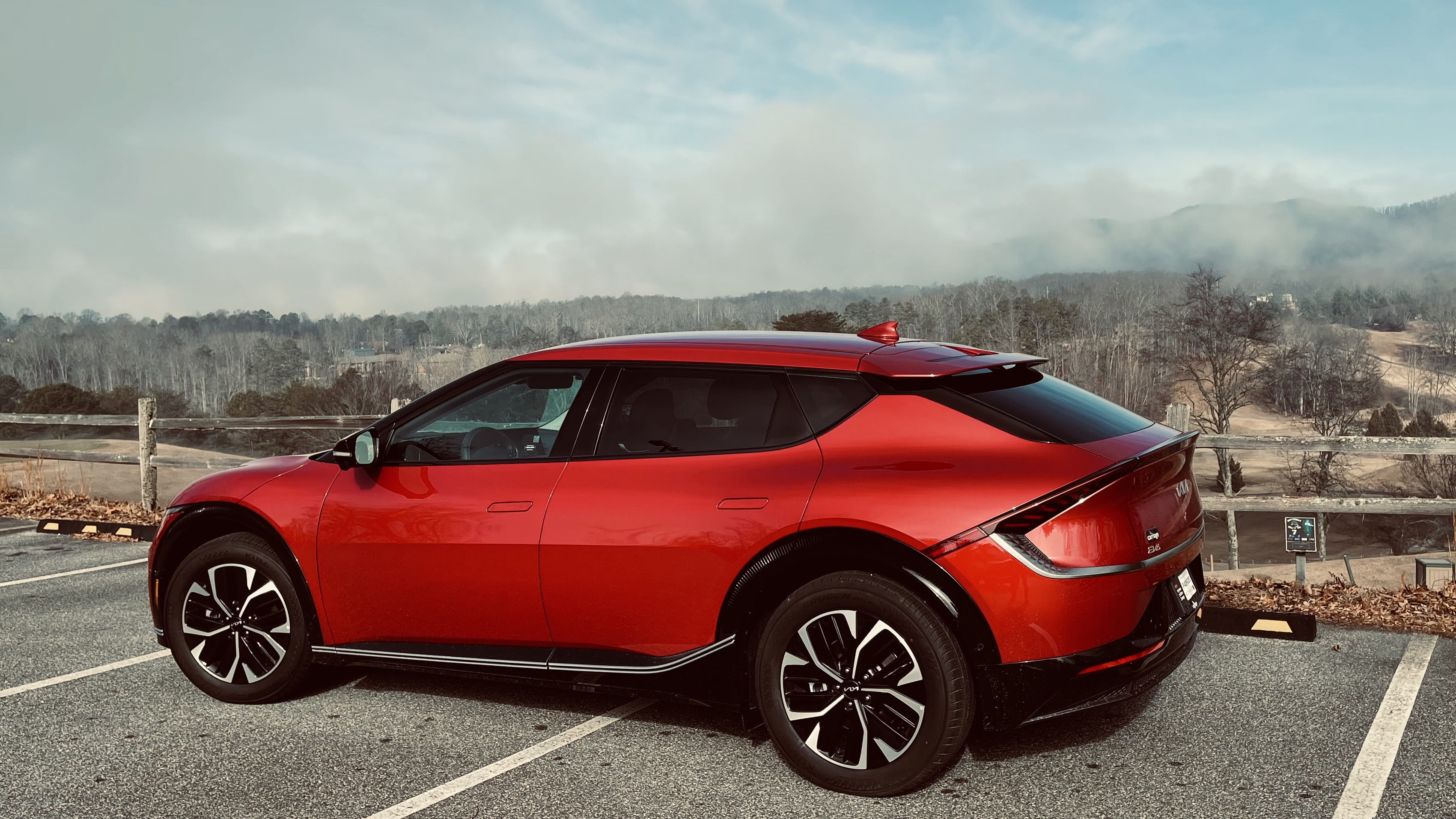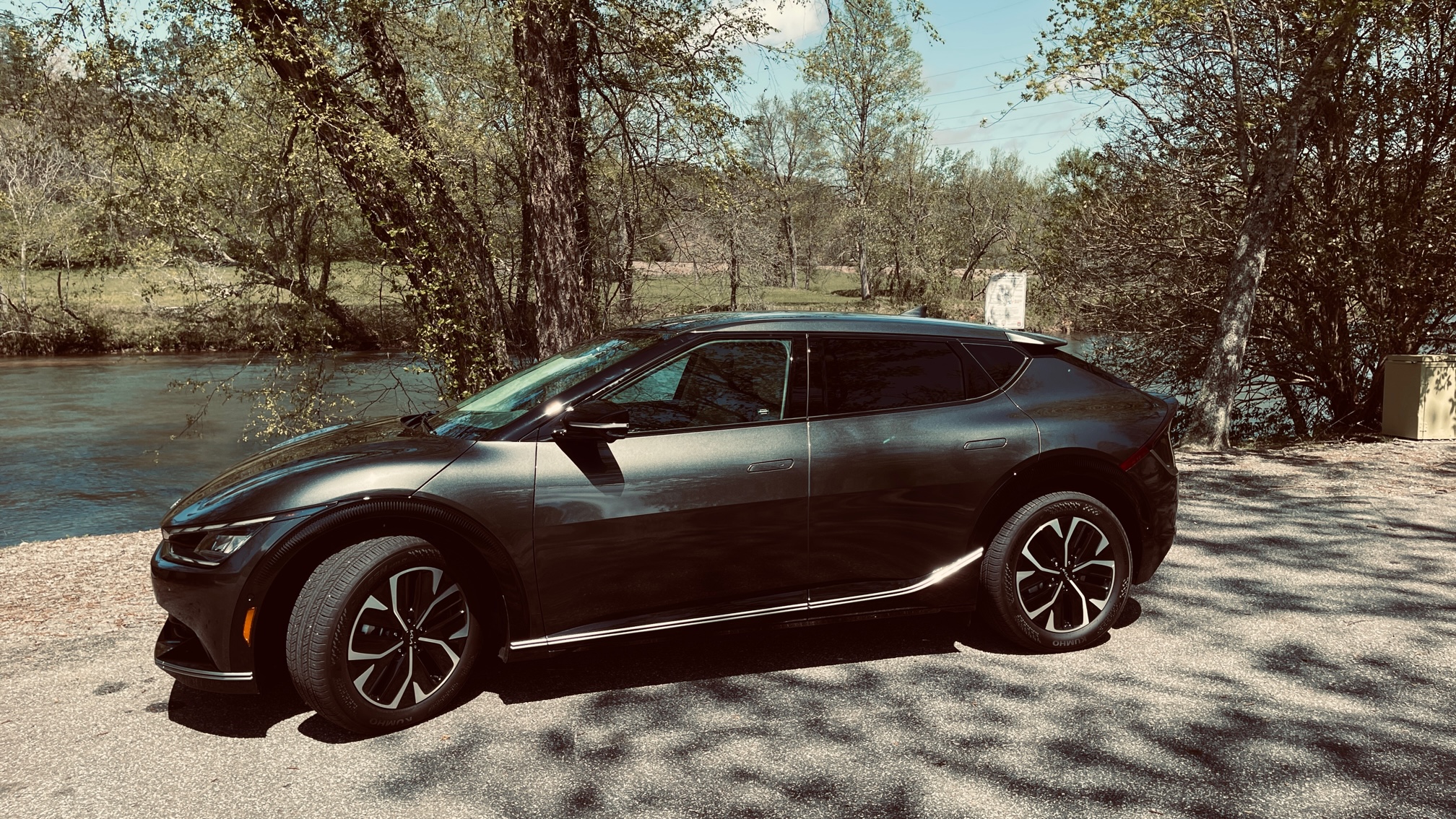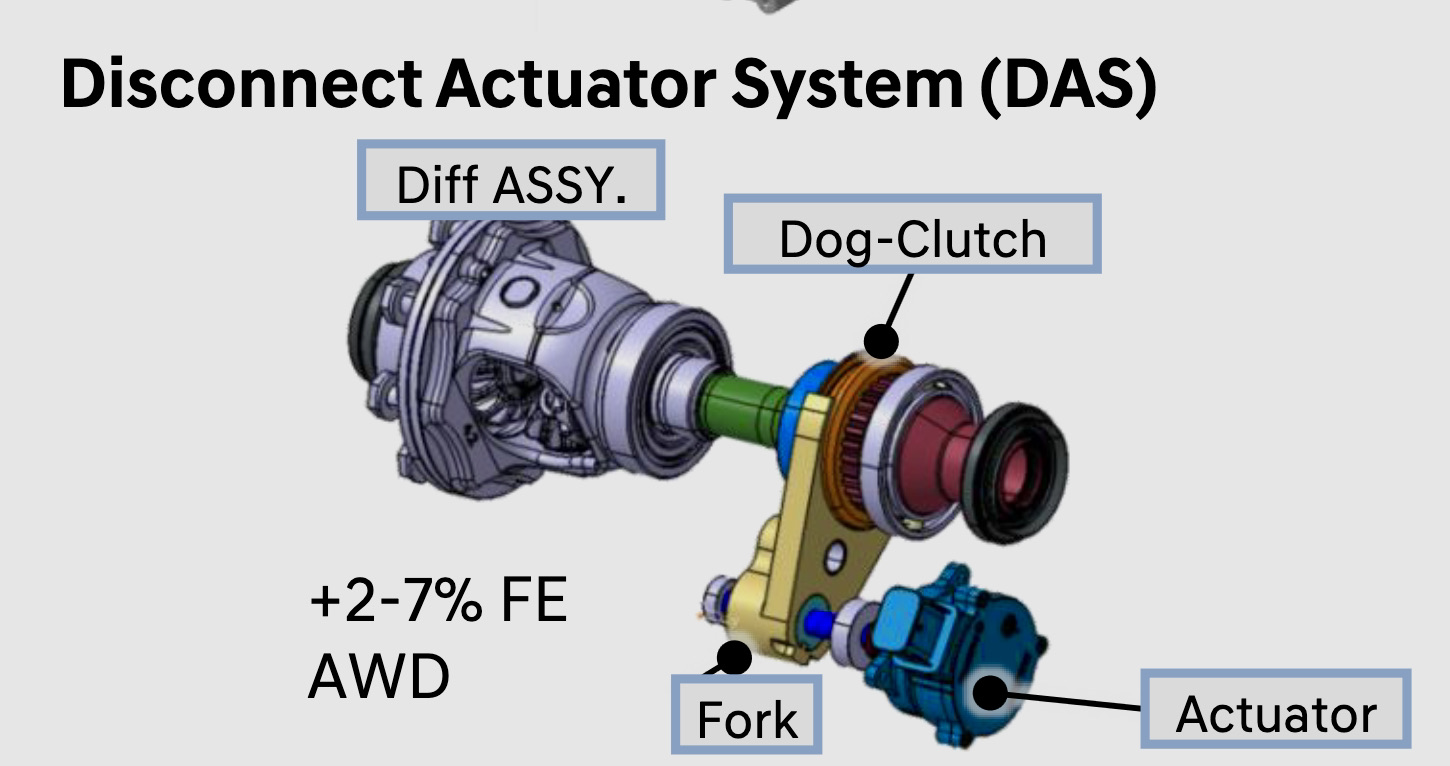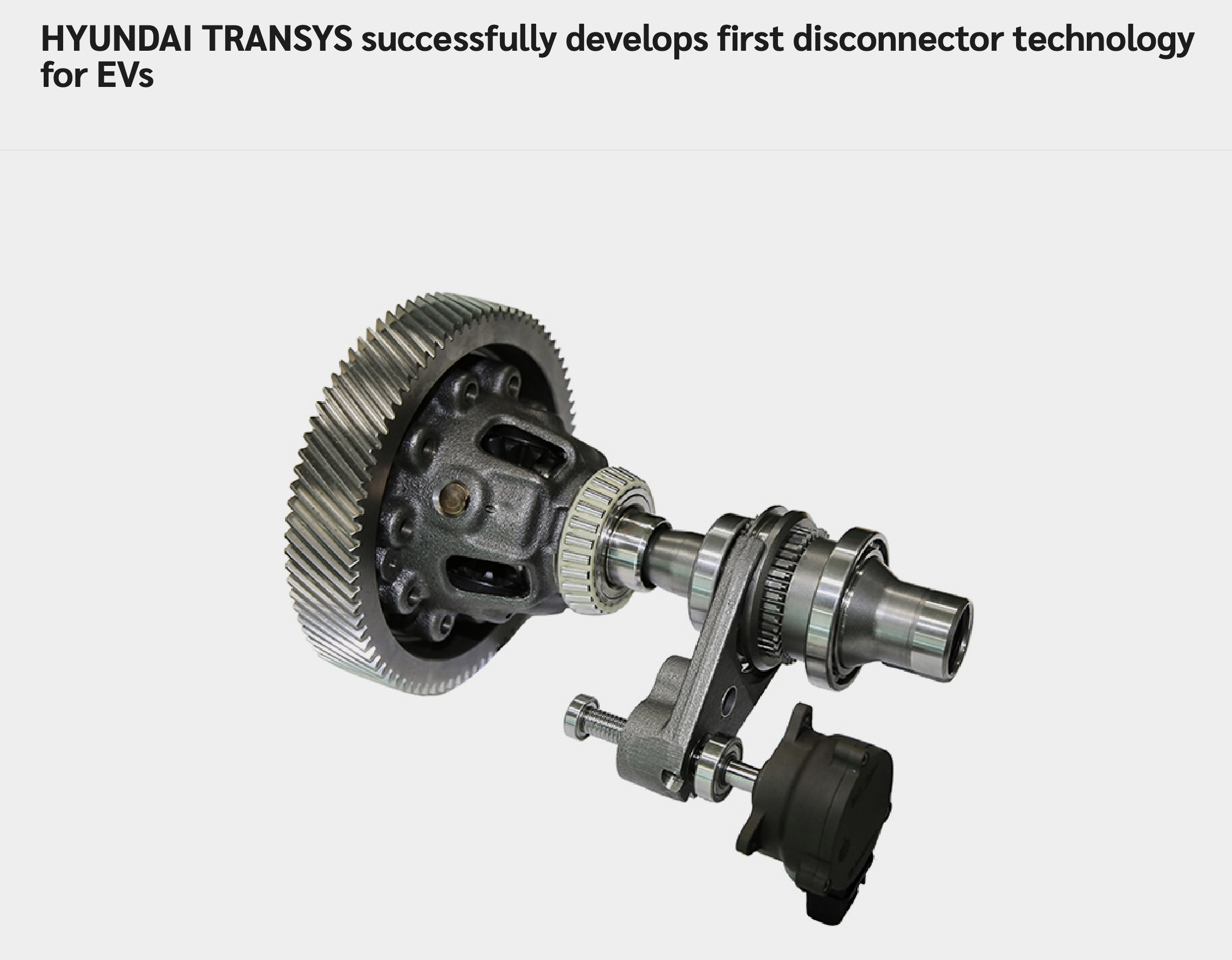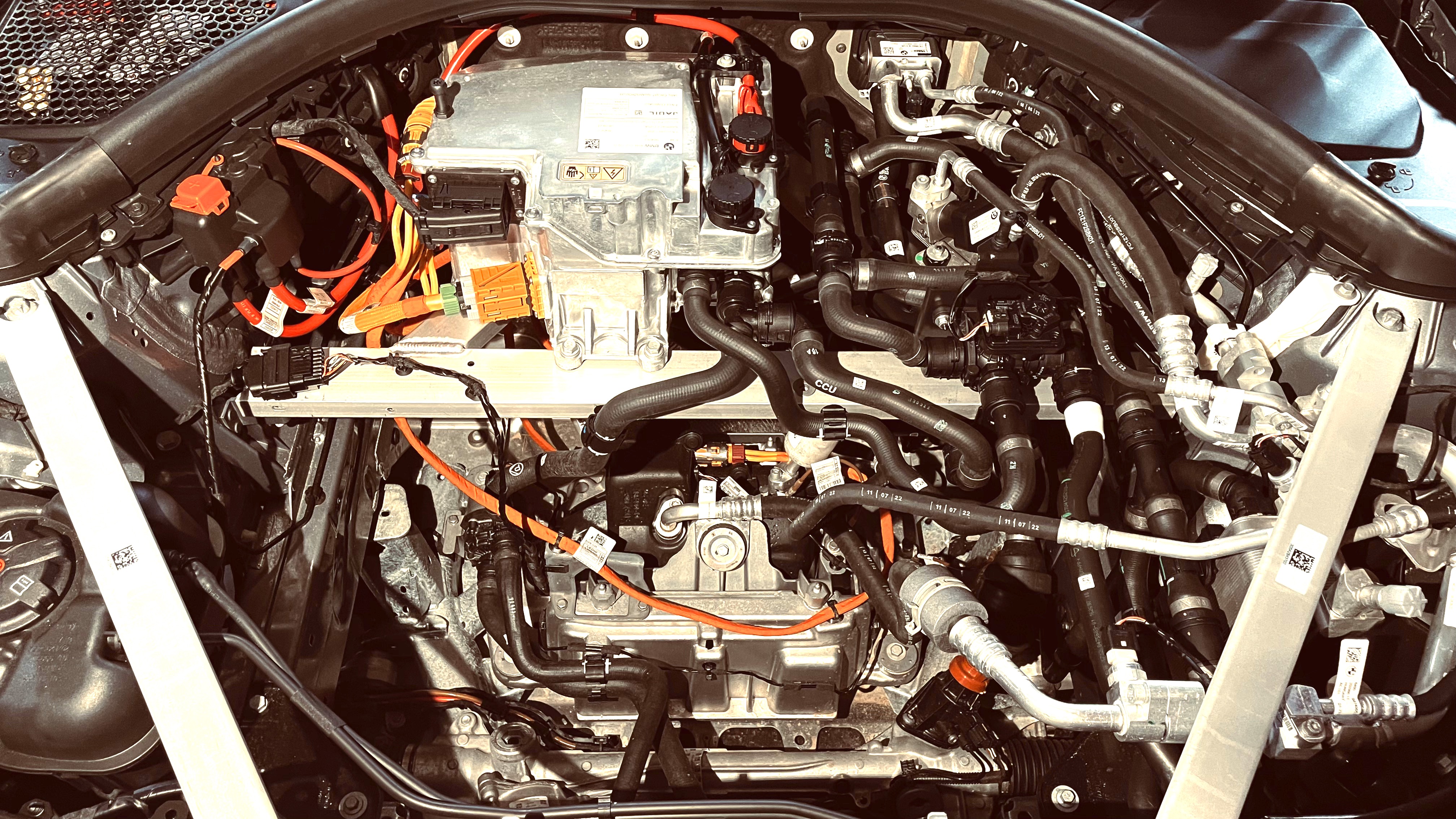Hello Guys - Regretfully there is no such thing as a single motor powering our Outlander unless something is broke. I know there is a lot of conversation regarding Eco mode using only one motor, but the truth of the matter, there is no such thing as a single motor powering our Outlander for added economy.
On a two motor system like the Outlander where both motors are coupled to the wheels, if only one motor was powering the the EV, the other motor would drag behind resulting in even worse range then using both motors.
Even though the second non-working motor is not helping to propel the car, it would still require sufficient power to prevent it from lagging behind because the tires are still turning the motor. Therefore, the lost power needed to prevent it dragging, plus inverter and motor losses would negate the use.
To avoid all these losses, what the Outlander really needs is a motor disengagement clutch to totally disengage the rear motor when not needed. This would make good sense, since possibly 98% of the time, we have no use to for both motors. Equipping the Outlander with a motor clutch would make a substantial difference in range.
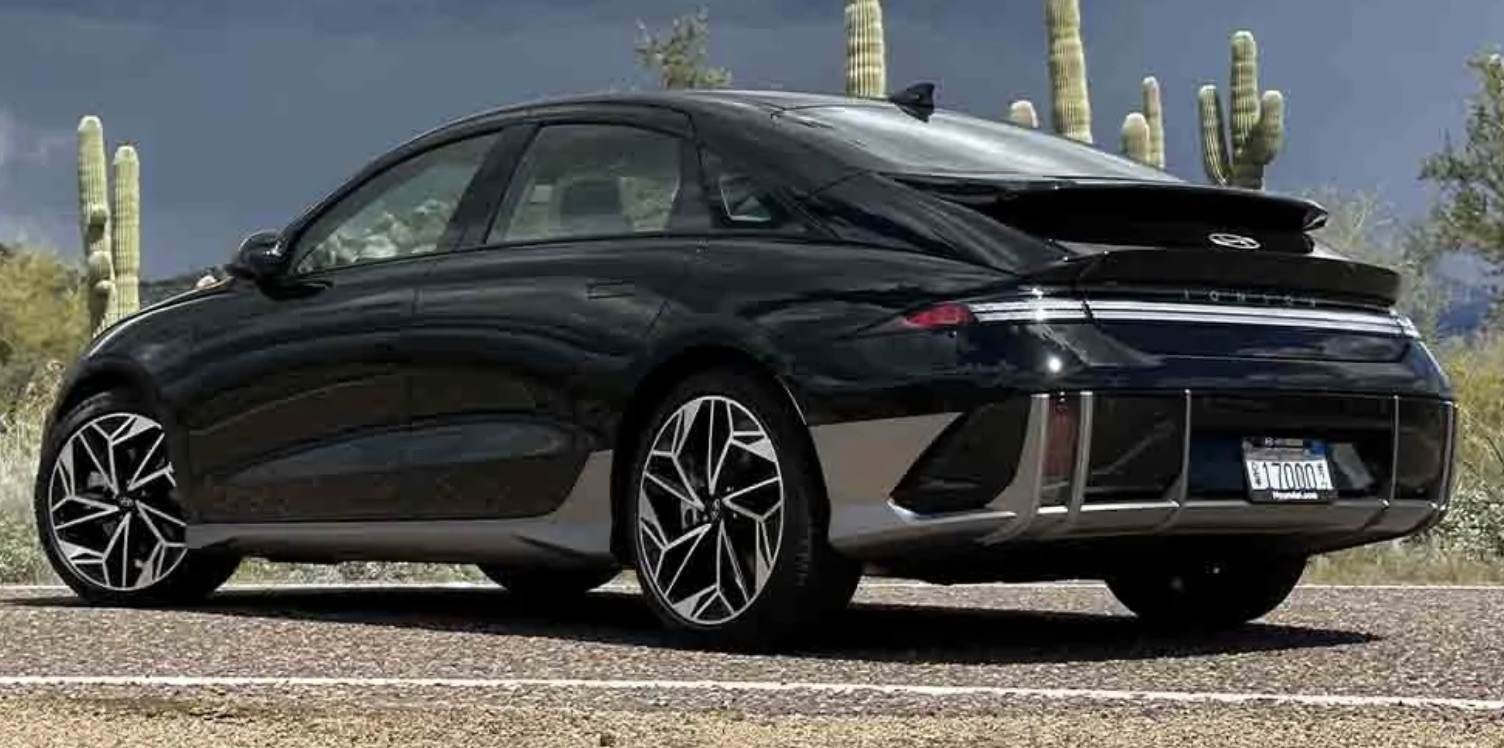
Hyundai recently equipped their AWD Iconiq 5 & 6 with a “Disconnect Actuator System” (DAS), a motor disengagement clutch to free the motor from the wheels, the result is a 6-8 % increase in range. Should this hold true for the Outlander, instead of up to 50 miles of range, we could see range increase to 55-58 miles.
Therefore my wish list for Mitsubishi for the 2024 Outlander is to incorporate a motor clutch system, then reduce tire size to 18 or 19 inches for additional range and a smoother and quieter ride.
If they did, we could see possibly 65-70 miles of range on one charge.
Regards - Mike
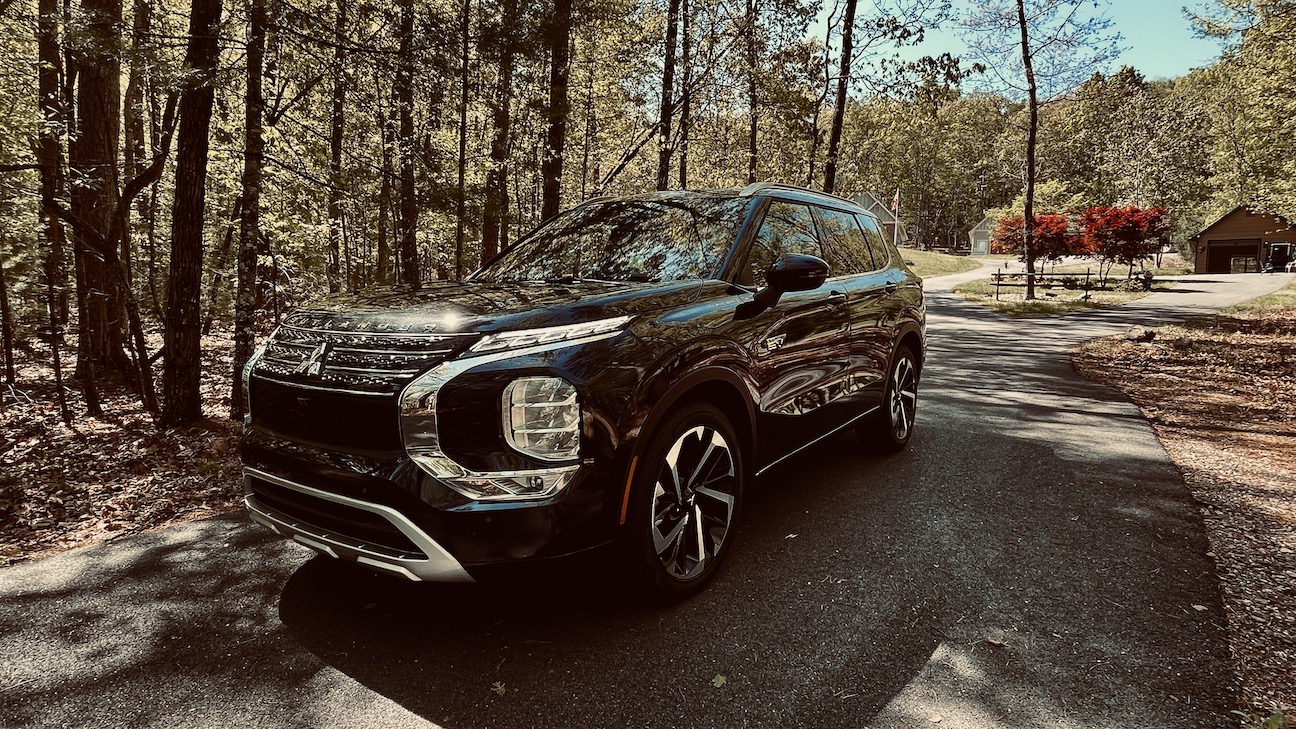
On a two motor system like the Outlander where both motors are coupled to the wheels, if only one motor was powering the the EV, the other motor would drag behind resulting in even worse range then using both motors.
Even though the second non-working motor is not helping to propel the car, it would still require sufficient power to prevent it from lagging behind because the tires are still turning the motor. Therefore, the lost power needed to prevent it dragging, plus inverter and motor losses would negate the use.
To avoid all these losses, what the Outlander really needs is a motor disengagement clutch to totally disengage the rear motor when not needed. This would make good sense, since possibly 98% of the time, we have no use to for both motors. Equipping the Outlander with a motor clutch would make a substantial difference in range.

Hyundai recently equipped their AWD Iconiq 5 & 6 with a “Disconnect Actuator System” (DAS), a motor disengagement clutch to free the motor from the wheels, the result is a 6-8 % increase in range. Should this hold true for the Outlander, instead of up to 50 miles of range, we could see range increase to 55-58 miles.
Therefore my wish list for Mitsubishi for the 2024 Outlander is to incorporate a motor clutch system, then reduce tire size to 18 or 19 inches for additional range and a smoother and quieter ride.
If they did, we could see possibly 65-70 miles of range on one charge.
Regards - Mike





